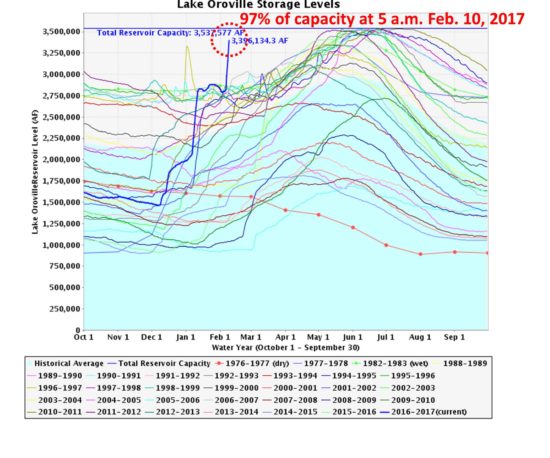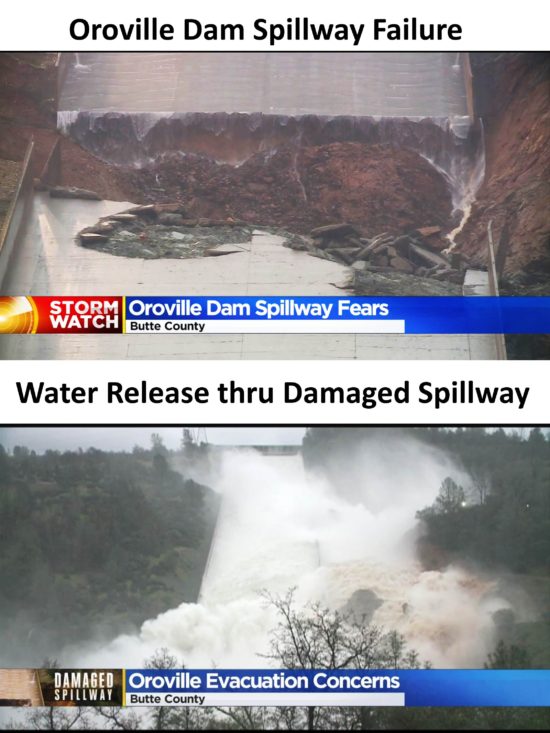The last couple of days have not made me very confident in the predictions of engineers associated with the Oroville Dam.
While I am a climate researcher, and not hydrologist, it took me less than an hour midday yesterday (see comments here) to estimate that the emergency spillway would be breached around 9 a.m. PST this morning. I was off by an hour…it was breached at 8 a.m.
But engineers were leaning toward the lake level never getting that high (901 ft.)
This kind of calculation isn’t rocket science. As long as inflow into the lake exceeds outflow (both of which are monitored hourly), the lake level will rise.
Why were engineers reluctant to predict the (admittedly historic) event?
Now let’s talk about something that is much more uncertain…the damage now occurring as water continues to erode the dam under the gaping hole which has split the main concrete spillway:
One dam engineer who has worked on similar dams is worried that this is a structural threat to the dam.
Furthermore we haven’t even entered snow melt season yet, and already Lake Oroville has exceeded its 100% capacity (here’s yesterday’s plot, at 97%):

Lake Oroville water levels in different years, showing the current level is unprecedented for so this date, and rapidly approaching a 100% full state.
So, I am merely raising the question: if engineers were reluctant to predict the current topping of the emergency spillway — a relatively benign event that was rather easily predicted — how much confidence can we have that the damage to the main spillway won’t compromise the dam?
I think engineers are going to have to be a little more forthcoming about whether such a failure — which threatens thousands of people immediately downstream — is indeed possible in the coming weeks and months as the massive mountain snowpack melts and continues to fill the lake — and continues to erode the spillways.

 Home/Blog
Home/Blog




